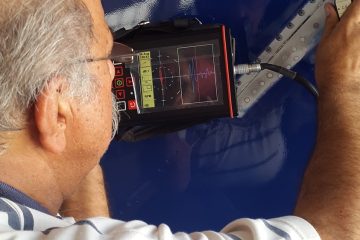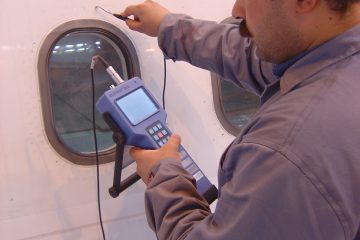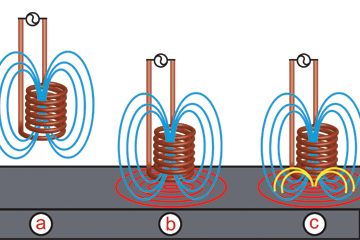Alternating electrical current is passed through a coil producing a magnetic field. When the coil is placed near a conductive material, the changing magnetic field induces current flow in the material. These currents travel in closed loops and are called eddy currents. Eddy currents produce their own magnetic field that can be measured and used to find flaws and characterize conductivity, permeability, and dimensional features.
Main Uses
Used to detect surface and near-surface flaws in conductive materials, such as the metal. Eddy current inspection is also used to sort materials based on electrical conductivity and magnetic permeability, and measures the thickness of thin sheets of metal and non-conductive coatings such as paint.
Main Advantages
- Detects surface and near surface defects.
- Test probe does not need to contact the part.
- Method can be used for more than flaw detection.
- Minimum preparation is required.
Disadvantages
- Only conductive materials can be inspected.
- Ferromagnetic materials require special treatment to address magnetic permeability.
- Depth of penetration is limited.
- Flaws that lie parallel to the inspection probe coil winding direction can go undetected.
- Skill and training required is more extensive than other techniques.
- Surface finish and roughness may interfere.
- Reference standards are needed for setup.




